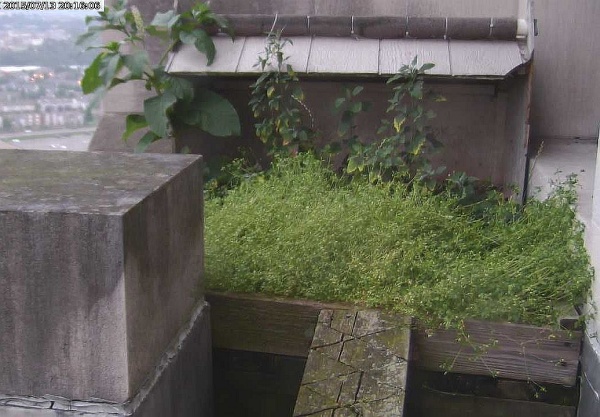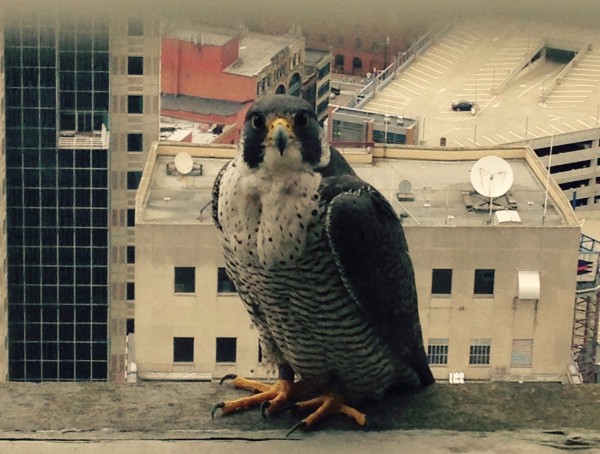
What happens when a long established peregrines’ ledge goes unused for a season?
Weeds grow.
This snapshot from the Gulf Tower nest shows that Nature takes over after 24 years of use, even on a skyscraper.
How did the plants get up so high? Some may have sprouted from wind-borne seeds, but others arrived as seeds in the digestive tracks of birds the peregrines ate at the nest. The annuals re-seed in place year after year.
The big plant at back left is pokeweed whose berries are food for many birds including robins and cedar waxwings.
Can you identify the other plants and guess how they got there?
p.s. The Downtown peregrines haven’t forgotten about the Gulf Tower. One stopped by last Thursday, July 16, in this photo from Ann Hohn at Make-A-Wish.

(weeds photo from the National Aviary falconcam at Gulf Tower; peregrine photo from Ann Hohn at Make-A-Wish)
The nest looks like my backyard! LOL!
Looks like a lot of chickweed there.
Ah. Greenery.Any spot left untended like that where I live turns to desert.
The medium sized, darker green plants look like they are one of the nightshades, or Solanaceae. There are many species so it is hard to pin down. I think my dad said they used to call them field tomatoes? They are poisonous, should have purple or white flowers, and small, green fruits that look like tomatoes. Tomatoes of course are in the same family so no surprise there are many similarities. The seeds might have dispersed from another bird having eaten it.
It really is a jungle out there 😉